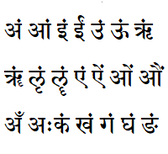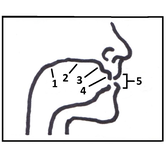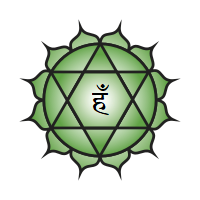Key to Learning Sanskrit
These texts provide the Sanskrit and English transliteration for helping people learn the Sanskrit sounds. They provide instruction on proper pronunciation which is extremely important for practicing Sanskrit mantras. They also provide insight into the unique energetic effects of the 52 unique sounds and provide practices which can be done using the different Sanskrit Aksharas (letters) themselves as mantras for healing.
A Note on Pronunciation
It is very important when reciting mantras to intone the sanskrit aksharas (letters) properly. The effects will be different (and can be catastrophic) if the sounds are not said correctly. Speakers of Tamil, Hindi, Telugu and other modern Indian languages should be aware that the Sanskrit sounds are sometimes slightly different than their counter parts in the modern languages. There are aspirated letters which are stressed more than they are in conversational speech to ensure a clear differentiation. For this reason, Indians are encouraged to look through this sheet. English speakers may find this text useful because it uses English sounds as a reference for describing the Sanskrit sounds. There is no amount of reading that can replace the direct instruction of a teacher when it comes to learning these sounds. This text can help people recall what they have been taught, but can never replace an actual teacher.
How to Pronounce Sanskrit Sounds with Swamiji
Part I |
Part II |
Part III |
Audio of the Sanskrit Sounds
Audio of the Sanskrit Sounds. Each of the Sanskrit Aksharas is chanted slowly and clearly by Swamiji and then repeated so that people trying to learn the Sanskrit sounds can practice along with the audio recording. This practice is very powerful and can be done as a mantra practice or meditation that heals every part of the body and consciousness in and of itself.
Veda Svaras
Notations for correct pitch for the melodious Vedic Hymns
There are three basic musical notes, called svaras, used in the traditional chanting of the Vedas. These are indicated in the Vedic mantras by svara marks added to the Sanskrit text or English transliteration. The three svaras are called: anudātta, udātta, and svarita. There is a fourth svara mark which indicates a particular change of pitch occurring within the same syllable. This changing svara is created by a combination of the udātta and svarita and is called dīrgha. Learning to identify these marks can help a student to learn the proper melody for the Veda mantras, which has a certain energy to complement the meaning of the mantra. For example, when udātta is followed by the svarita (as occurs in the dīrgha svara), this increases the energy. This happens at the end of many Vedic mantras to help empower a specific energy and to increase the blessings of the mantra. Many Vedic mantras end with the word "hāvu" recited in this combination of pitches: hā = udātta; and vu = svarita. The word hāvu is an exclamation of joy and this combination of svaras has a mystical effect to increase joy for those who chant or hear the mantra. Some combinations of svaras will cause decrease instead. Some are heating; some are cooling; some are stimulating; some are pacifying. It is important to get the most powerful results from our chanting practice to use the correct Veda svaras. The complex musical hymns of the Sāmaveda have more complex svaras which are best learned directly from a teacher. The document below helps to identify the svara marks in mantra texts.



